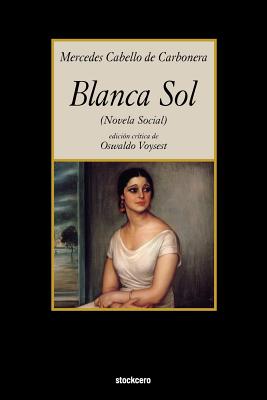A bestseller in its time with four published editions, Blanca Sol (1889) was a highly controversial novel when it first appeared. Thought by many to be a roman à clef about a well-known woman of Lima's high society, Mercedes Cabello de Carbonera (1842-1909) distanced herself from this criticism by making substantial changes for the second edition and by including a prologue stating her intentions of writing a realist novel, a social novel, inspired in reality, but not a copy. With a well earned reputation as an outspoken feminist writer and contributor to cultural journals in Peru and abroad with essays such as La influencia de la mujer en la civilización and Necesidad de una industria para la mujer , Mercedes Cabello explores in Blanca Sol the consequences of social climbing, adulation, vanity, and excessive narcissistic infatuation, while also criticizing loveless marriage. The eponymous protagonist wryly declares in this regard, marriage without love was nothing but prostitution accepted by society . The novel tells the story of Blanca Sol's move to social heights, and then her descent into prostitution. Blanca marries a wealthy simpleton to save her family from their lost fortune and maintain her social position. While she lives the life of a socialite, her husband goes into bankruptcy as a result of Blanca's lifestyle. Faced with penury, six children to support, and a husband confined in an insane asylum due to the combined effect of financial insolvency and marital failure, Blanca Sol follows what she thinks is the only road to maintain her past lifestyle: prostitution. Defiant up to the very end, she seeks to take revenge despising society and scoffing at virtue and morality . Blanca Sol presents many of the themes Mercedes Cabello writes in her essays: pretense, excessive materialism, marriage for convenience, and women's education. The novel combines melodrama and realistic techniques to portrait the vices of Blanca Sol and examine a society that, in the eyes of the author, values gold above all. As Mazquiarán de Rodríguez points out, many critics consider Blanca Sol to be the first naturalistic attempt at a novel to appear in Peru . Mercedes Cabello de Carbonera is also the author of the novels Sacrificio y recompensa (1886); Los amores de Hortensia (Una historia contemporánea) (1887); Eleodora (1887); Las consecuencias (1889); El conspirador (1892). Additionally, she published the following essays in book form: La novela moderna. Estudio filosóf






